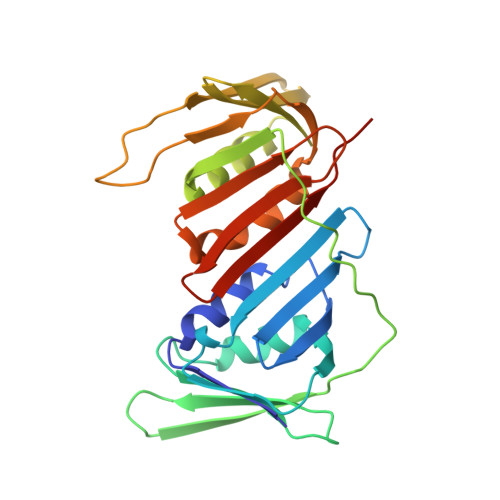Structural and Biochemical Studies of Human Proliferating Cell Nuclear Antigen Complexes Provide a Rationale for Cyclin Association and Inhibitor Design
Kontopidis, G., Wu, S., Zheleva, D., Taylor, P., Mcinnes, C., Lane, D., Fischer, P., Walkinshaw, M.(2005) Proc Natl Acad Sci U S A 102: 1871
- PubMed: 15681588
- DOI: https://doi.org/10.1073/pnas.0406540102
- Primary Citation of Related Structures:
1VYJ, 1VYM, 1W60 - PubMed Abstract:
The interactions between the tumor suppressor protein p21WAF1 and the cyclin-dependent kinase (CDK) complexes and with proliferating cell nuclear antigen (PCNA) regulate and coordinate the processes of cell-cycle progression and DNA replication. We present the x-ray crystal structure of PCNA complexed with a 16-mer peptide related to p21 that binds with a Kd of 100 nM. Two additional crystal structures of native PCNA provide previously undescribed structures of uncomplexed human PCNA and show that significant changes on ligand binding include rigidification of a number of flexible regions on the surface of PCNA. In the competitive binding experiments described here, we show that a 20-mer sequence from p21 can be associated simultaneously with PCNA and CDK/cyclin complexes. A structural model for this quaternary complex is presented in which the C-terminal sequence of p21 acts like double-sided tape and docks to both the PCNA and cyclin molecules. The quaternary complex shows little direct interaction between PCNA and cyclin, giving p21 the role of an adaptor molecule. Taken together, the biochemical and structural results delineate a druggable inhibitor site on the surface of PCNA that may be exploited in the design of peptidomimetics, which will act independently of cyclin-groove inhibitors.
Organizational Affiliation:
Cyclacel Limited, James Lindsay Place, DD1 5JJ Dundee, Scotland.














